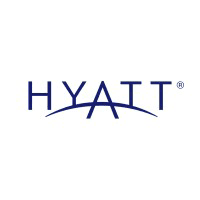
Avid Hotels
How much does Avid Hotels cost?
Initial Investment Range
$10,360,751 to $15,714,550
Franchise Fee
$113,500 to $149,000
The licensee will establish and operate a hotel under the avid hotels brand.
Enjoy our partial free risk analysis below
Unlock the full risk analysis to access 9 more categories covering 100+ risks.
Avid Hotels April 15, 2025 FDD Risk Analysis
Free FDD Library AI Analysis Date: July 16, 2025
DISCLAIMER: Not Legal Advice - For Informational Purposes Only. Consult With Qualified Franchise Professionals.
Franchisor Stability Risks
Start HereDisclosure of Franchisor's Financial Instability
Low Risk
Explanation
This risk was not identified. The audited financial statements for Holiday Hospitality Franchising, LLC (HHFL) and its guarantor, Six Continents Hotels, Inc., show a strong and stable financial position. Both entities report consistent profitability, positive net worth, and substantial assets. The financial health of the franchisor appears robust, which is a positive indicator of its ability to support the franchise system and meet its obligations.
Potential Mitigations
- An accountant should still review the financial statements, including footnotes, to form an independent opinion on the franchisor's financial health.
- Ask your business advisor to assess whether the franchisor's financial resources are adequate to support its planned system growth.
- During due diligence calls, you could ask existing franchisees about their perception of the franchisor's financial commitment to the brand.
High Franchisee Turnover
Low Risk
Explanation
This risk was not identified. The data in Item 20's tables for the past three years shows zero terminations, non-renewals, or franchised outlets that ceased operations for other reasons. This indicates a very high level of franchisee continuity within the system for the periods reported. Such low turnover is a positive sign regarding the stability of the existing franchisee base.
Potential Mitigations
- You should still contact a diverse group of current franchisees from the list in Exhibit E1 to discuss their satisfaction and experience with the system.
- A business advisor can help you formulate questions to understand why franchisee retention appears so high.
- Your franchise attorney can provide context on how this data compares with typical industry churn rates.
Rapid System Growth
Low Risk
Explanation
The franchise system is expanding, growing from 46 to 71 outlets over the last three years. While rapid growth can sometimes strain a franchisor's resources, the provided financial statements in Item 21 for HHFL and its parent show significant financial strength. This suggests the company likely has the resources to manage its growth and support new franchisees, mitigating the typical risks associated with rapid expansion.
Potential Mitigations
- Inquire with the franchisor about their specific plans to scale training and support staff to match the rate of new hotel openings.
- Discuss with a range of existing franchisees, both new and established, whether they feel the level of franchisor support is adequate.
- A business advisor can help you evaluate if the franchisor's support infrastructure seems commensurate with its growth trajectory.
New/Unproven Franchise System
Low Risk
Explanation
While the avid brand is relatively new (launched in 2017), it is operated by HHFL and backed by InterContinental Hotels Group (IHG), one of the world's largest and most experienced hotel franchisors. The system's track record, as shown in Item 20, appears stable with no franchisee failures. The established backing of IHG significantly mitigates the risks typically associated with a new or unproven franchise system.
Potential Mitigations
- Your business advisor should still assess the avid brand's specific market position and performance relative to other IHG brands.
- It is wise to speak with some of the earliest avid franchisees to understand their experience during the initial brand rollout.
- Your attorney can review the FDD to ensure all obligations are backed by the well-established parent company, not just the newer brand entity.
Possible Fad Business
Low Risk
Explanation
This risk was not identified. The avid hotel concept is positioned as a midscale hotel focused on providing high-quality basics for everyday travelers. This targets a large and established segment of the lodging market. The business model does not appear to be based on a short-term trend or fad, suggesting a more sustainable long-term demand for the services offered.
Potential Mitigations
- A business advisor can help you conduct independent market research to confirm the long-term demand for this hotel segment in your specific area.
- Evaluate the brand's ability to adapt to changing travel trends and economic conditions during your due diligence.
- You might ask existing franchisees about the brand's resilience and customer loyalty.
Inexperienced Management
Low Risk
Explanation
This risk was not identified. Item 2 of the FDD lists the franchisor's executive team. The individuals listed possess extensive and long-term experience within the hospitality industry, primarily with the parent company, InterContinental Hotels Group (IHG). This depth of experience in both hotel operations and franchising is a significant positive factor.
Potential Mitigations
- It's still valuable to research the public track records of key executives to understand their history of leadership and brand management.
- When speaking with existing franchisees, you can inquire about their direct experiences with the management team's support and strategic direction.
- A business advisor can offer perspective on the strength and reputation of the leadership team within the broader hospitality industry.
Private Equity Ownership
Low Risk
Explanation
This risk was not identified. The franchisor, HHFL, is part of InterContinental Hotels Group PLC, a publicly traded company. It is not owned by a private equity firm. This structure may suggest a focus on long-term brand health rather than the shorter-term investment horizons often associated with private equity ownership.
Potential Mitigations
- Your attorney can confirm the corporate ownership structure through public records to ensure there are no undisclosed controlling interests.
- Your accountant can review the public filings of the ultimate parent company, IHG, to understand its long-term financial strategy.
- A business advisor can discuss the typical differences in strategy between publicly traded and private equity-owned franchise systems.
Non-Disclosure of Parent Company
Low Risk
Explanation
This risk was not identified. Item 1 clearly discloses the franchisor's corporate structure, including its parent, Six Continents Hotels, Inc. (SCH), and its ultimate parent, InterContinental Hotels Group PLC. Furthermore, Item 21 includes audited financial statements for both the franchisor (HHFL) and the guarantor parent (SCH), providing a transparent view of the financial health of the entities supporting your franchise.
Potential Mitigations
- An accountant should review the financial statements of both the franchisor and its parent to understand their inter-company financial relationship.
- Your attorney should examine the parent guaranty to confirm the extent of the parent's commitment to back the franchisor's obligations.
- It is useful to ask the franchisor to explain the roles and responsibilities of the different corporate entities within the system.
Predecessor History Issues
Low Risk
Explanation
This risk was not identified. Item 1 of the FDD notes the franchisor's history and predecessors. A review of Items 3 and 4, which disclose litigation and bankruptcy history, does not reveal any negative information specifically attributed to these predecessor entities that would suggest inherited systemic problems. The operational and legal history appears stable.
Potential Mitigations
- Your attorney should still carefully review all disclosures related to predecessor entities.
- During your due diligence calls, asking long-term franchisees about their experience under any previous ownership can provide valuable insight.
- A business advisor can assist in researching the public history of any named predecessor companies for additional context.
Pattern of Litigation
High Risk
Explanation
Item 3 discloses a significant amount of litigation, including five consolidated class-action lawsuits brought by franchisees. The allegations are serious, including claims of improper required purchasing programs, receipt of kickbacks, breach of contract, and breach of good faith and fair dealing. While the franchisor has had some legal successes, the volume and nature of these lawsuits from existing franchisees indicate a potentially contentious relationship and significant disputes within the system.
Potential Mitigations
- Your franchise attorney must conduct a thorough review and analysis of all litigation disclosed in Item 3.
- It is crucial to discuss these lawsuits with a broad range of current franchisees to understand their perspective on the issues.
- A business advisor can help assess the potential business impact of the issues underlying the litigation, such as required purchasing programs.
Disclosure & Representation Risks
Example Risk: Franchisee Financial Obligations
Blue Risk
Explanation
This risk involves the financial obligations that a franchisee must meet, including initial fees, ongoing royalties, and other required payments. Understanding these obligations is crucial for long-term success.
Potential Mitigations
- Carefully review the Franchise Disclosure Document (FDD) and consult with a franchise attorney to fully understand all financial commitments before signing.
- Conduct regular risk assessments
- Implement monitoring and reporting systems
Unlock Full Risk Analysis
Purchase the complete risk review to see all 102 risks across all 10 categories.
Financial & Fee Risks
Example Risk: Franchisee Financial Obligations
Blue Risk
Explanation
This risk involves the financial obligations that a franchisee must meet, including initial fees, ongoing royalties, and other required payments. Understanding these obligations is crucial for long-term success.
Potential Mitigations
- Carefully review the Franchise Disclosure Document (FDD) and consult with a franchise attorney to fully understand all financial commitments before signing.
- Conduct regular risk assessments
- Implement monitoring and reporting systems
Unlock Full Risk Analysis
Purchase the complete risk review to see all 102 risks across all 10 categories.
Legal & Contract Risks
Example Risk: Franchisee Financial Obligations
Blue Risk
Explanation
This risk involves the financial obligations that a franchisee must meet, including initial fees, ongoing royalties, and other required payments. Understanding these obligations is crucial for long-term success.
Potential Mitigations
- Carefully review the Franchise Disclosure Document (FDD) and consult with a franchise attorney to fully understand all financial commitments before signing.
- Conduct regular risk assessments
- Implement monitoring and reporting systems
Unlock Full Risk Analysis
Purchase the complete risk review to see all 102 risks across all 10 categories.
Territory & Competition Risks
Example Risk: Franchisee Financial Obligations
Blue Risk
Explanation
This risk involves the financial obligations that a franchisee must meet, including initial fees, ongoing royalties, and other required payments. Understanding these obligations is crucial for long-term success.
Potential Mitigations
- Carefully review the Franchise Disclosure Document (FDD) and consult with a franchise attorney to fully understand all financial commitments before signing.
- Conduct regular risk assessments
- Implement monitoring and reporting systems
Unlock Full Risk Analysis
Purchase the complete risk review to see all 102 risks across all 10 categories.
Regulatory & Compliance Risks
Example Risk: Franchisee Financial Obligations
Blue Risk
Explanation
This risk involves the financial obligations that a franchisee must meet, including initial fees, ongoing royalties, and other required payments. Understanding these obligations is crucial for long-term success.
Potential Mitigations
- Carefully review the Franchise Disclosure Document (FDD) and consult with a franchise attorney to fully understand all financial commitments before signing.
- Conduct regular risk assessments
- Implement monitoring and reporting systems
Unlock Full Risk Analysis
Purchase the complete risk review to see all 102 risks across all 10 categories.
Franchisor Support Risks
Example Risk: Franchisee Financial Obligations
Blue Risk
Explanation
This risk involves the financial obligations that a franchisee must meet, including initial fees, ongoing royalties, and other required payments. Understanding these obligations is crucial for long-term success.
Potential Mitigations
- Carefully review the Franchise Disclosure Document (FDD) and consult with a franchise attorney to fully understand all financial commitments before signing.
- Conduct regular risk assessments
- Implement monitoring and reporting systems
Unlock Full Risk Analysis
Purchase the complete risk review to see all 102 risks across all 10 categories.
Operational Control Risks
Example Risk: Franchisee Financial Obligations
Blue Risk
Explanation
This risk involves the financial obligations that a franchisee must meet, including initial fees, ongoing royalties, and other required payments. Understanding these obligations is crucial for long-term success.
Potential Mitigations
- Carefully review the Franchise Disclosure Document (FDD) and consult with a franchise attorney to fully understand all financial commitments before signing.
- Conduct regular risk assessments
- Implement monitoring and reporting systems
Unlock Full Risk Analysis
Purchase the complete risk review to see all 102 risks across all 10 categories.
Term & Exit Risks
Example Risk: Franchisee Financial Obligations
Blue Risk
Explanation
This risk involves the financial obligations that a franchisee must meet, including initial fees, ongoing royalties, and other required payments. Understanding these obligations is crucial for long-term success.
Potential Mitigations
- Carefully review the Franchise Disclosure Document (FDD) and consult with a franchise attorney to fully understand all financial commitments before signing.
- Conduct regular risk assessments
- Implement monitoring and reporting systems
Unlock Full Risk Analysis
Purchase the complete risk review to see all 102 risks across all 10 categories.
Miscellaneous Risks
Example Risk: Franchisee Financial Obligations
Blue Risk
Explanation
This risk involves the financial obligations that a franchisee must meet, including initial fees, ongoing royalties, and other required payments. Understanding these obligations is crucial for long-term success.
Potential Mitigations
- Carefully review the Franchise Disclosure Document (FDD) and consult with a franchise attorney to fully understand all financial commitments before signing.
- Conduct regular risk assessments
- Implement monitoring and reporting systems
Unlock Full Risk Analysis
Purchase the complete risk review to see all 102 risks across all 10 categories.











